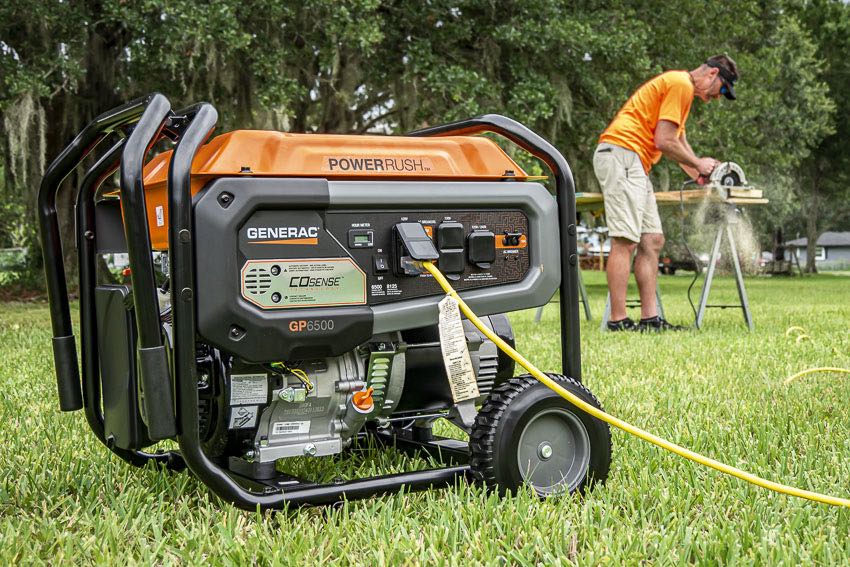Generac GP6500 COsense Delivers Reliable Power with a Carbon Monoxide Sensor
Whether your priorities are emergency power or powering your jobsite, it’s always generator season. With hurricane season ramping up and no slow-down for our team’s construction needs, we’re taking a deeper dive into what the Generac GP6500 COsense portable generator has to offer.
Pros
- COsense monitors carbon monoxide levels and automatically shuts down if levels get too high
- 4 x 120V outlets and 1 x 120/240V outlet
- Solid frame build
- $799 price tag offers excellent value at this power level and with CO sensing
Cons
- Improper positioning can cause the CO sensor to trip when there’s no danger (common to all CO-sensing generators)
- Not recommended for sensitive electronics
Generac GP6500 COsense 6500-Watt Portable Generator
COSense
The highlight feature for this Generac 6500-watt generator is COsense. It’s a sensor that detects carbon monoxide levels, alerting you to dangerous levels and shutting down the engine automatically.
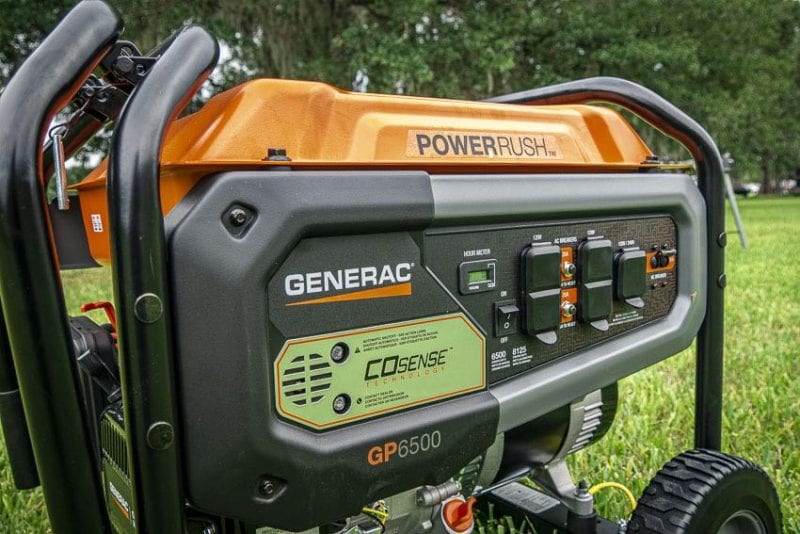
Every year, people using generators think it’s okay to run them as long as there’s an open door or window, but it’s not enough. Even some areas of jobsites can be an accumulation point. Unfortunately, it’s a mistake that can have fatal consequences.
With COsense, you get detection that’s faster than typical household CO detectors, allowing engine shutdown to happen quickly.
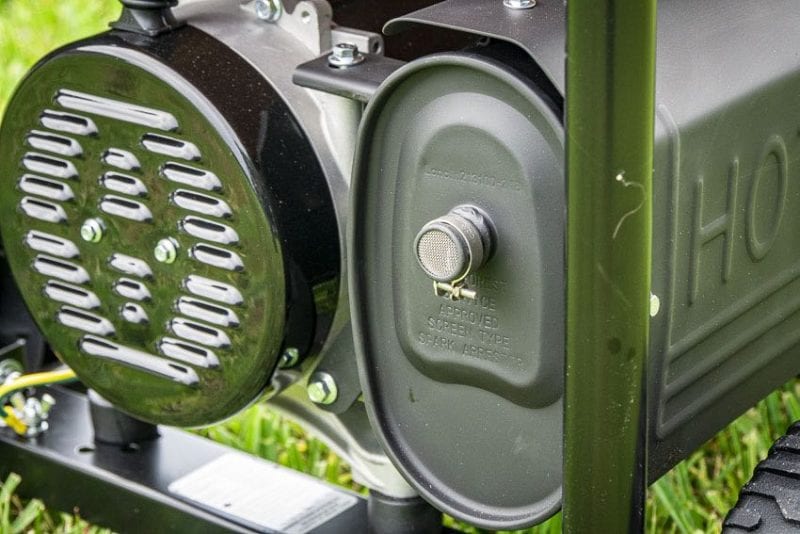
Sometimes, that can work against you, even when you have the generator set up in a position that’s safe to run. Be aware of what direction the wind is blowing and make sure the exhaust is blowing away from the sensor and not into it to avoid accidental shutdowns.
Power
The Generac GP6500 COsense uses a Generac 389cc overhead valve engine to deliver 6500 continuous running watts. Generac’s PowerRush Advanced Technology takes care of the inrush current, boosting it up to 8125 starting watts.
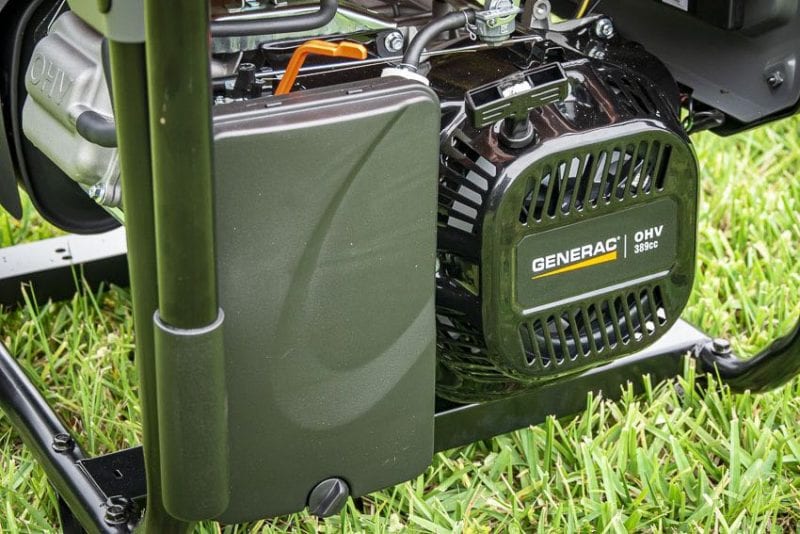
The biggest question is what that power means to you. Every situation is different, of course.
If you want to have an electrician set your house up for a direct connection, there’s enough power to run most single-unit central AC units (3000 – 5000 watts) and have some room leftover for your refrigerator and a few other things.
In fact, anything that plugs in with a standard 120V outlet is fair game. It’s just a matter of how many of those items you can use at once. Even 240V items up to 27 running amps will make the cut.
Basically, 6500 continuous running watts gives you a lot of versatility but stops well short of what you need from a whole-house generator.
Check out this article to see how you can figure out your wattage needs.
Runtime
After “what can I run?” usually comes “how long will it run?” when we get questions about generators. The Generac GP6500 COsense is no different when it comes to our answer—it depends on what you’re running.

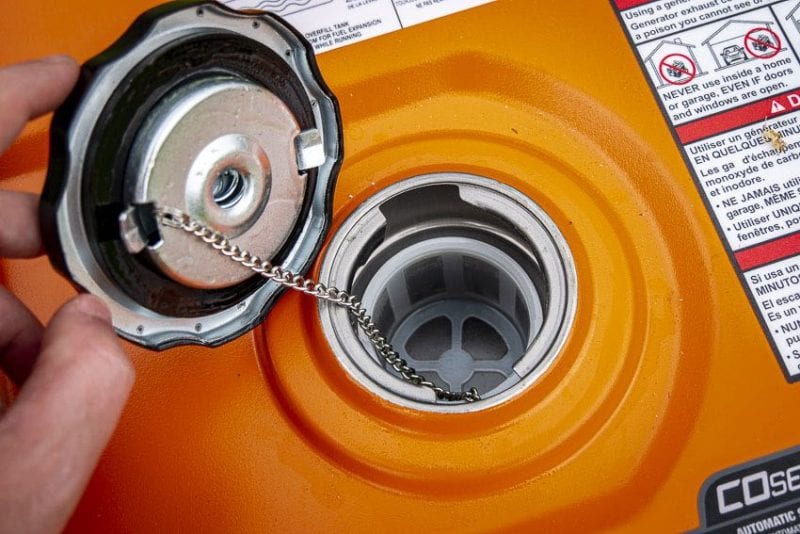
At 50% capacity (3350 watts), the unit’s 6.9-gallon gas tank will keep the engine running about 10 1/2 hours. If you’re thinking about emergency power, that’s a little less than 16 gallons of fuel per day.
You’ll get less runtime if you’re running more watts and more if you’re running fewer.
Noise Level
Technically, there’s no standard for testing generator noise levels that we’re aware of in the US. Further complicating any test is that putting a load on the generator means we have to run some sort of equipment and add to the noise level.
That said, we still ran a few tests. From the front, we measured at 3 feet to capture what you might hear briefly when you start it up. Then we measured at 20 feet as a safe working distance.
Keep in mind that your generator is probably running between idle and half throttle most of the time and only kicking up higher to handle inrush currents.
| 3 Feet | 20 Feet | |
|---|---|---|
| Idle | 90 decibels | 76 decibels |
| 50% Throttle | 94 decibels | 81 decibels |
| 100% Throttle | 98 decibels | 89 decibels |
Just for kicks, we ran one more test to see how close you hit 85 decibels at idle—the limit when OSHA hearing protection regulations kicks in. It’s at 7 1/2 feet for this model.
Connections
Obviously, you can only run what you have plugs for. Here are the connections you get on the Generac GP6500 COsense:
- 2 x 120V, 20A 5-20R GFCI Duplex (4 total outlets)
- 1 x 120/240V, 30A L14-30R Twist Lock
There aren’t any USB or 12V outlets to connect directly to the generator, but that’s okay. You’re typically using those kind of devices inside and the generator’s going to be outside.
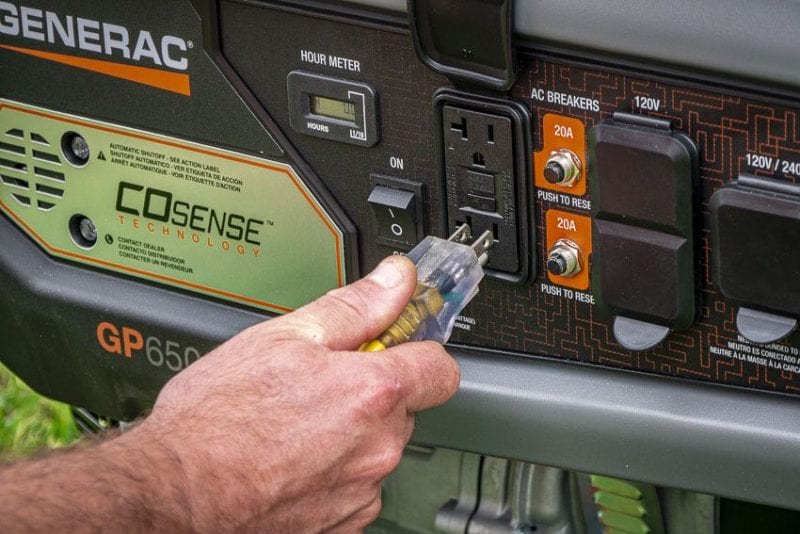
Pro Tip: Make sure you’re using the right extension cord for what you’re running. Check out this article for some help choosing the best gauge and length.
Transportation
The generator’s frame is made from 1 1/4-inch steel tube, giving it plenty of rigidity and strength. 9 1/2-inch never-flat wheels let you roll easily over most surfaces. While they can sink in a bit on soggy ground, they’re effective on hard surfaces and firm ground.
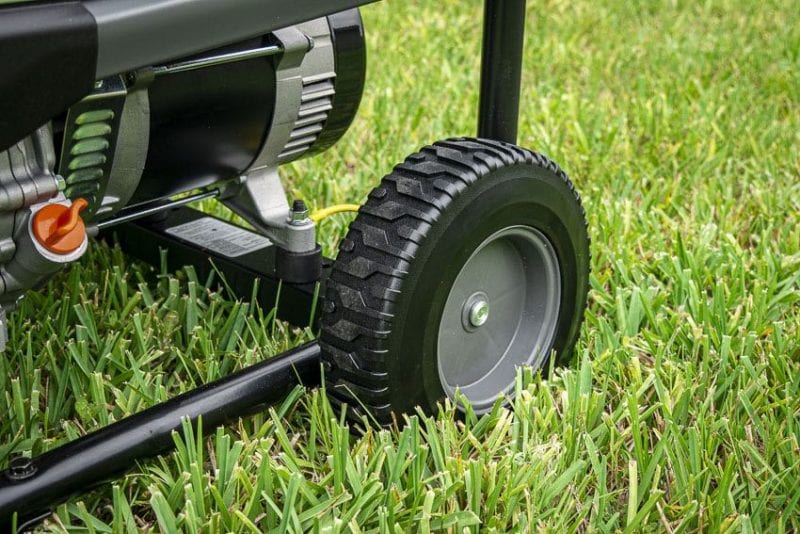
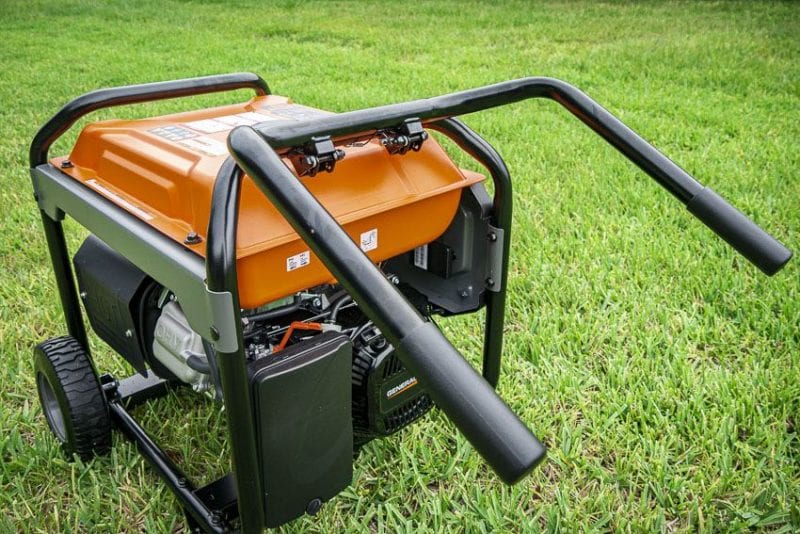
The handle installation seems a little odd at first. Everything in us wanted to install it upside down based on first impressions. When you install it correctly, though, it folds down out of the way. Its position means you have to bend down a little to grab the bars, but it puts the unit at a comfortable rolling height and angle.
Additional Features
- Hour meter display on the control panel helps you track maintenance intervals
- Low-oil level shutdown prevents major engine damage
- Outlet covers help protect against the elements
- Fuel shutoff valve (we like that it’s metal and not plastic)
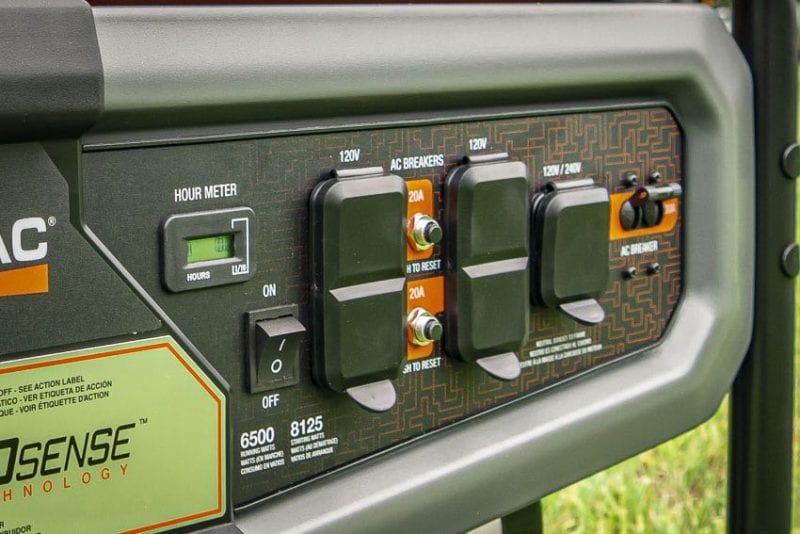
Missing Features
- Electric start (available on the GP6500 without COsense)
- Not recommended for sensitive electronics (THD—total harmonic distortion—is over 5%)
- Automatic choke
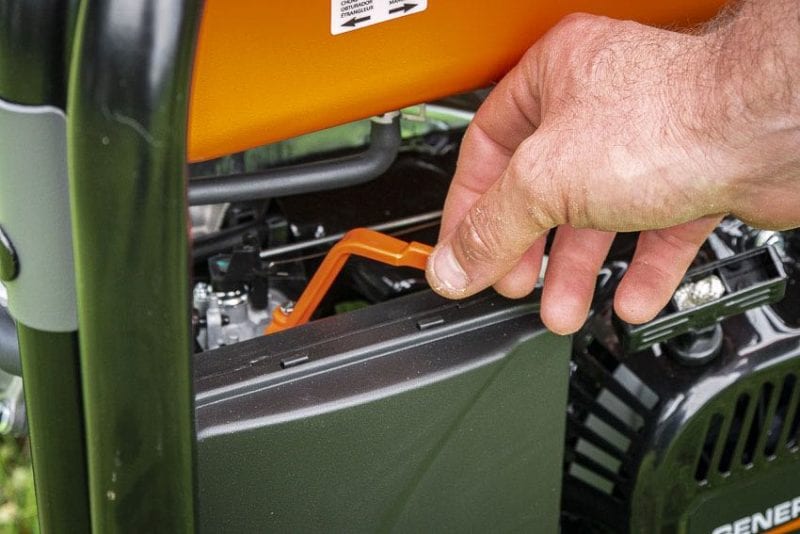
One concern I have is the choke lever. Its shape and plastic construction put it at risk of breaking off. It’s easily accessible and still workable if it does, but a thicker lever or more rigid design might be in order.
Price
At $949, the Generac GP6500 COsense sits at a pretty attractive price point. Here’s what several other models with the similar running watts and CO sensors run:
- Champion 100593 with CO Shield (6250 running watts): $749
- Generac GP6500 with COsense 7680: $949
- Ryobi RY906500S with CO Shutdown: $799
- DeWalt DXGNR6500 with CO Protect: $899
The Bottom Line
The Generac GP6500 COsense portable generator gives you a lot of bang for your buck. Its 6500-watt running capacity offers plenty of versatility for emergency and jobsite power while its COsense device provides protection against carbon monoxide buildup. Sure, there are some nice options you can have with other models, but you’ll need to start jacking that $949 price up quite a bit.
Generac Portable Generator Specs
- Model: Generac GP6500
- Running Watts: 6500 W
- Starting Watts: 8125 W
- AC Voltage: 120/240 VAC
- AC Frequency: 60 Hz
- 120/240 VAC Amperage: 54.2/27.1
- Engine Displacement: 389cc
- Length: 27.2 in.
- Width: 27 in.
- Height: 26.5 in.
- Weight: 172 lbs.
- Warranty: 3-year residential/1-year commercial
- Price: $949
Check out more Generac products by visiting their website.

